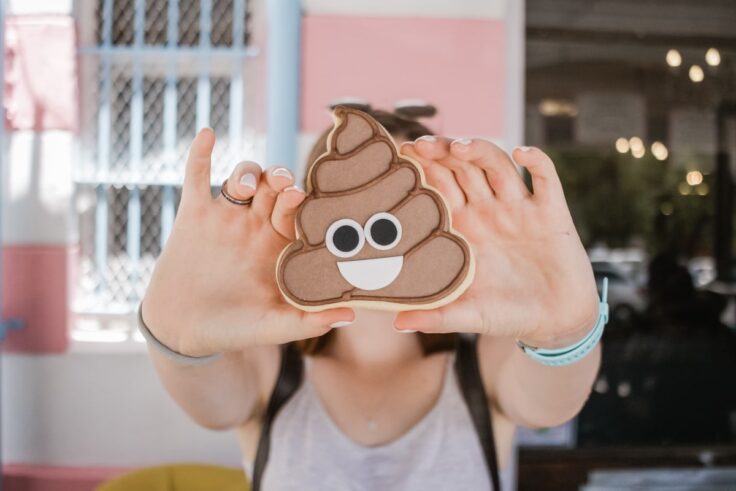What Your Poop Can Tell You About Your Health

The last thing you want to do after sitting on the toilet is to check your work before flushing. But your poop can actually save your life. Here’s how.
The disgusting habit of checking your poop can help you discover some significant health concerns, or at the very least alert you when you should see your doctor.
While we conceive poop as “number two”, the experts at the Bristol University distinguish seven different types of bowel movements. This is known as the “Bristol Stool Scale” or “Meyers Scale”.
This medical chart is used by doctors to diagnose a range of medical disorders. The time your stool spends within your colon and what happens while it’s there have a significant impact on the appearance of your poop.
Poop Types And What They Tell You
Here are some things to keep an eye out for the next time you go to the bathroom:
Type 1: Rabbit Poop
This type of stool looks like peanuts, it is bumpy and rough. Also, it takes a lot of effort to pass them, and you’ll often feel like you haven’t “finished the job”.
Type one poop is also known to be caused by allergy drugs like Benadryl. And it’s also prevalent among women shortly after giving birth.
If this happens frequently, it might indicate a scar or a growth on your colon.
Type 2: Sausage Poop
This type of stool is still firm and lumpy, it causes stomach pain, and it’s difficult to pass.
You could have a slow bowel (nothing to be concerned about) if you observe type two poop regularly.
Both the first and the second type might indicate that you’re constipated. Constipation can be relieved by drinking more water and consuming fiber-rich meals like fruits and vegetables. Cutting back on meat, potatoes, and cheese will also help.
Type 3: Healthy Poop
You shouldn’t have too much trouble passing this type of stool. And it resembles a sausage with small cracks on the surface, so it’s easy to recognize.
Type 4: Snake Poop
This is similar to type three poop; it is soft and smooth on the outside but not split apart, and also indicates that your meals are packed with foods rich in fiber.
Both types three and four indicate that your diet is good and that you have no severe stomach ailments to be concerned about.
Now, watch out for the following three stool types…
Type 5: Clumpy Poop
This type of poop appears like soft blobs, and while it’s harmless, it might indicate stress or a negative reaction to a recent meal.
Type five, as well as lactose intolerance, is frequently mentioned by IBS sufferers.
Clumpy poop can also be a consequence of a diet high in artificial sugar.
Type 6: Pudding Poop
This type of stool is frequently compared to pudding or mud. It’s a sort of diarrhea that isn’t entirely watery. The fragments appear to be fluffy and have ragged edges.
If you experience type six poop on a frequent basis, it’s possible that your body isn’t receiving the necessary amount of minerals and vitamins.
Also, antibiotics and diabetes medications can cause pudding poop due to the modifications they bring to your gut flora.
It might be an indication of a severe gastrointestinal ailment like Crohn’s Disease or Colitis.
Type 7: All Water
This is what diarrhea looks like when it’s almost fully liquid. If you’re seeing this type of poop, you’ll probably need to use the restroom more frequently, maybe once every few hours. So staying hydrated is recommended.
If type five, six, or seven persists over time, it might indicate an infection or a severe bowel disorder.
What To Look For?
In general, this is what you should be looking out for:
- If it lasts more than a week, any stool type other than 3 or 4 is a reason to worry.
- A healthy individual should have a stool every day, or at least three times a week.
- Because your intestines are full of serotonin and epinephrine receptors, they are highly sensitive to stress. So your stool will modify if you’re under high levels of stress.
- If you’re losing weight quickly or see blood in your poop, you should see your doctor immediately.
Bristol Stool Scale – Infographic
Here’s the stool chart according to the scientists at Btistol University:
